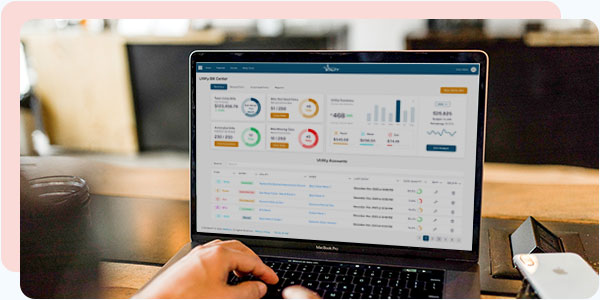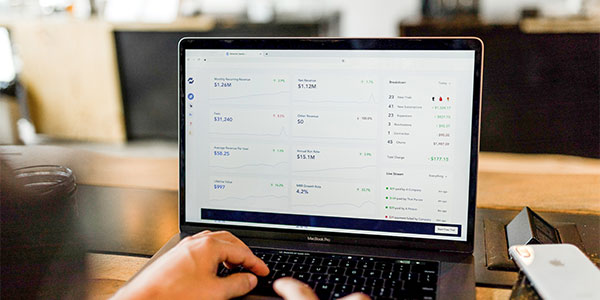A Property Manager’s Guide for Utility Billing
Billing for utilities can be a complex process for property managers. In this property managers utility billing guide, we aim to demystify the various utility billing methods, ensuring fairness, transparency, and tenant satisfaction.

Utility Billing Guide: Different Methods Overview
Property managers use several common methods for billing tenants for utilities. The choice of method depends on factors like the type of utilities provided, local regulations, and the property’s infrastructure. It also depends on the education of the property managers. This property manager’s guide to utility billing aims to give property managers the education they need to fulfill all of our utility tenant data.
Method 1: Metered Billing
Metered billing is a method where tenants are billed based on their actual usage. This method offers accuracy and fairness in utility billing, ensuring that tenants only pay for what they consume. Usually, metered billing is performed using smart meters. These smart meters will be hooked up to an AMR system which will push all data to a software system in real-time. Sometimes, meters are read manually by the property manager who then puts the information into spreadsheets allowing them to then bill off the consumption numbers. However, challenges may arise in terms of meter maintenance costs and potential disputes.
How it works
Installation of Meters: Each unit is equipped with separate utility meters that measure consumption independently.
Individual Consumption: Tenants are billed based on the actual amount of utilities they use, as recorded by their individual meters.
Accurate Billing: The utility bill for each tenant corresponds directly to their specific consumption, offering a precise reflection of their usage patterns.
Pros and Cons:
Pro: Accuracy
Metered billing provides the most accurate representation of individual consumption, promoting fairness in allocating costs based on actual usage.
Pro: Conservation Incentive
Since tenants directly bear the cost of their consumption, metered billing creates a strong incentive for individuals to conserve resources, leading to potential energy and water savings.
Pro: Transparent Billing
Tenants can easily understand their bills, as they directly correlate with their meter readings. This transparency can reduce disputes and enhance tenant satisfaction.
Con: Installation Costs
Implementing metered billing may require an upfront investment in installing individual meters for each unit, which can be a considerable expense.
Con: Maintenance
Property managers are responsible for maintaining and repairing individual meters. Any malfunctions or issues must be promptly addressed to ensure accurate billing.
Con: Complexity for Multi-Unit Buildings
In multi-unit buildings, managing and reading numerous meters can be logistically challenging, requiring efficient systems and processes.
Implementing Metered Billing Successfully:
1) Communication: Clearly communicate the shift to metered billing to tenants, explaining the benefits of accuracy and transparency. Provide guidance on how to read meters and understand their bills.
2) Regular Maintenance: Establish a routine maintenance schedule to ensure all meters are functioning correctly. Promptly address any issues or malfunctions to maintain accurate billing.
3) Educational Resources: Offer educational resources to tenants on energy and water conservation practices. This can complement the incentive for conservation created by metered billing.
4) Technology Integration: Explore the integration of smart meters or other advanced technologies to streamline the meter-reading process and enhance accuracy.
Metered billing is a robust and fair method for calculating tenant utility costs. While there are initial costs and maintenance considerations, the potential for accurate billing, conservation incentives, and transparent communication make it a widely adopted and effective approach for many property managers.
Method 2: Ratio Utility Billing System (RUBS)
The Ratio Utility Billing System (RUBS) is a billing method that offers property managers a way to fairly allocate utility costs among tenants based on predetermined factors, rather than individual meter readings. Instead of directly measuring consumption, RUBS relies on a proportional distribution of utility expenses. The allocation is typically based on factors such as square footage, the number of occupants, or a combination of both.
How It Works:
Determining Factors: Property managers must decide on the factors used for allocation, such as square footage or the number of bedrooms or occupants.
Calculation: The total utility costs for the property are divided among units based on the predetermined factors. Each unit’s share is then billed to the respective tenant.
Monthly Charges: Tenants are billed a fixed amount each month based on their share of the overall utility costs, regardless of their actual consumption.
Pros and Cons:
Pro: Simplicity and Cost Savings
RUBS is often simpler to implement compared to submetering and can save on the costs associated with installing and maintaining individual meters for each unit.
Pro: Equitable Distribution
RUBS offers a more equitable distribution of utility costs compared to a flat-rate system. It takes into account factors that contribute to overall consumption, such as the size of living spaces or the number of occupants.
Pro: Flexibility
Property managers have some flexibility in choosing the allocation factors, allowing them to tailor the system to the characteristics of their property.
Con: Potential for Disputes:
Since RUBS relies on predetermined factors rather than actual consumption, tenants may perceive the allocation as unfair. Clear communication and transparency are crucial to address potential disputes.
Con: Lack of Incentive for Conservation:
Unlike metered billing where tenants directly control their utility costs, RUBS may not provide a strong incentive for individual conservation since tenants pay a fixed amount regardless of personal usage.
Con: Legal Considerations:
Some jurisdictions may have regulations or restrictions on the use of RUBS. Property managers should be aware of local laws and ensure compliance.
Implementing RUBS Successfully:
1) Transparent Communication: Clearly communicate the RUBS method to tenants, including the factors used for allocation. Transparency can help mitigate concerns and build trust.
2) Regular Review: Periodically review and adjust the allocation factors to ensure they accurately reflect changes in property dynamics, such as renovations or fluctuations in occupancy.
3) Compliance: Stay informed about local regulations regarding utility billing to ensure that the chosen RUBS method complies with legal requirements.
In choosing RUBS, property managers should carefully weigh the benefits of simplified billing and equitable cost distribution against potential challenges related to tenant perception and legal considerations. Effective communication and a well-thought-out implementation plan are key to successful RUBS adoption.
Method 3: Inclusive Rent with a Utility Allowance
Explanation:
Inclusive rent with a utility allowance is a billing method where the cost of utilities is bundled into the overall rent, but with a predetermined allowance or cap. This approach provides simplicity for tenants, as they pay a fixed amount each month that includes both rent and an allotted sum for utilities. If a tenant’s utility usage exceeds the predetermined allowance, they may be responsible for additional charges.
How It Works:
Bundled Billing: The property manager includes the cost of utilities in the monthly rent, creating a single, predictable payment for tenants.
Utility Allowance: A predetermined allowance is established, covering a reasonable estimate of average utility usage.
Exceeding Allowance: If a tenant’s utility usage surpasses the allowance, they may incur additional charges.
Pros and Cons:
Pro: Simplicity
Tenants benefit from a simplified billing structure, as they only need to manage a single monthly payment that covers both rent and utilities.
Pro: Budget Predictability
Both tenants and property managers enjoy predictable monthly costs, which can make budgeting more manageable.
Pro: Reduced Administrative Burden
Property managers are not required to track individual utility usage for each tenant, streamlining administrative tasks.
Con: Potential for Overuse
Tenants may be less incentivized to conserve resources, as the fixed payment may not directly correlate with individual consumption.
Con: Property Manager’s Challenge
Estimating a fair utility allowance can be challenging, and if set too low, tenants may frequently exceed it, leading to disputes or dissatisfaction.
Con: Variable Utility Costs
Fluctuations in utility prices can impact the effectiveness of a fixed utility allowance, potentially leading to an underestimation of costs.
Implementing Inclusive Rent with a Utility Allowance Successfully:
1) Clear Communication: Communicate the inclusive rent structure to tenants, detailing the utility allowance and the potential for additional charges if usage exceeds the cap.
2) Regular Allowance Reviews: Periodically review and adjust the utility allowance to ensure it aligns with current market conditions and the property’s specific dynamics.
3) Tenant Education: Provide educational materials on energy and water conservation to encourage responsible usage, even within the context of an inclusive rent arrangement.
4) Transparent Billing Statements: Ensure that billing statements clearly outline the rent and utility components, including any additional charges for exceeding the utility allowance.
Inclusive rent with a utility allowance is a straightforward method that offers convenience for both tenants and property managers. However, careful consideration of the utility allowance, effective communication, and ongoing reviews are essential to ensure fairness and avoid potential issues related to overuse or underestimation of costs.
Conclusion
In conclusion, fair and transparent utility billing is essential for property managers to maintain tenant satisfaction, increase property value, and contribute to overall sustainability. Property managers can carefully select the appropriate billing method to ensure equitable utility distribution while considering their property’s characteristics and values.





